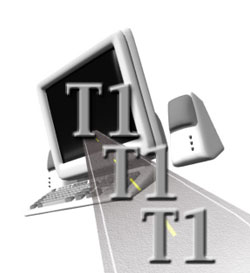
New cross party US legislation, The STOP Online Piracy Act, has set off heated arguments both for and against the new proposals. The entertainment industry is broadly on one side, supporting the law’s provisions. Against are an array of groups including advocates on behalf of individual and civil liberties, the technology industry and other pressure groups. The Bill was introduced by House Judiciary Committee chairman Lamar Smith (R-Texas). The draft legislation is set out as a bill "To promote prosperity, creativity, entrepreneurship, and innovation by combating the theft of U.S. property, and for other purposes."
SOPA (HR 3261) is an attempt to tackle websites and addresses that violate U.S. copyright laws but have no physical presence in the country. They key is to make offending sites invisible to US internet users - and to strangle their income. It requires Internet Service Providers block access to offending sites, and ensure search engines omit them from results. It will also require credit card and other financial services to block payments to them, and US firms from advertising with them. But opponents say that what SOPA doesn’t do is require is any kind of verification that the site is actually infringing and “dedicated to the theft of U.S. property”. Those against SOPA instead express concerns that the proposed law contains too many vague terms, it is technically unfeasible, and it presumes guilt. You can find the Bill here
http://judiciary.house.gov/hearings/pdf/112%20HR%203261.pdfJohn Conyers (D-Mich) and one of the Bill’s sponsors said “Today marks an important step in furthering Congress’ constitutional prerogative to protect the rights of artists and innovators” adding “I look forward to working with all of the entities in the online ecosystem to effectively choke off the funding for rogue websites and eliminate their safe-havens as the bill becomes law. Millions of American jobs hang in the balance, and our efforts to protect America’s intellectual property are critical to our economy’s long-term success.”
The
Electronic Frontier Foundation strongly disagrees. “Under this bill, service providers (including hosting services) would be under new pressure to monitor and police their users’ activities. Websites that simply don’t do enough to police infringement (and it is not at all clear what would qualify as ‘enough’) are now under threat, even though the DMCA expressly does not require affirmative policing” and many others do too.”
To explain the various positions I thought it easiest to use their words and so below I set out some (but nowhere near all) of the public facing responses. Those against the Bill include The Center for Democracy and Technology, Demand Progress, the Electronic Frontier Foundation, Public Knowledge, Fight for the Future and Tech Freedom. Those for the Bill include The US Committee on the Judiciary, the Recording Industry Assn. of America (RIAA), the Motion Picture Association. of America (MPA), the Copyright Alliance, the Independent Film & Television Alliance, National Music Publishers Association, the American Association of Independent Music and a joint statement from the American Federation of Musicians (AFM) and Screen Actors Guild (SAG) amongst others.
FOR THOSE AGAINSTThe EFF said this of SOPA under the headline
Disastrous IP Legislation Is Back – And It’s Worse than Ever: “We've reported [here] often on efforts to ram through Congress legislation that would authorize massive interference with the Internet, all in the name of a fruitless quest to stamp out all infringement online. Today Representative Lamar Smith upped the ante, introducing legislation, called the Stop Online Piracy Act, or “SOPA” that would not only sabotage the domain name system but would also threaten to effectively eliminate the DMCA safe harbors that, while imperfect, have spurred much economic growth and online creativity.
As with its Senate-side evil sister, protect-ip, SOPA would require service providers to “disappear” certain websites, endangering Internet security and sending a troubling message to the world: it’s okay to interfere with the Internet, even effectively blacklisting entire domains, as long as you do it in the name of IP enforcement. Of course blacklisting entire domains can mean turning off thousands of underlying websites that may have done nothing wrong. And in what has to be an ironic touch, the very first clause of SOPA states that it shall not be “construed to impose a prior restraint on free speech.” As if that little recitation could prevent the obvious constitutional problem in what the statute actually does.
But it gets worse. Under this bill, service providers (including hosting services) would be under new pressure to monitor and police their users’ activities. Websites that simply don’t do enough to police infringement (and it is not at all clear what would qualify as “enough”) are now under threat, even though the DMCA expressly does not require affirmative policing. It creates new enforcement tools against folks who dare to help users access sites that may have been “blacklisted,” even without any kind of court hearing. The bill also requires that search engines, payment providers (such as credit card companies and PayPal), and advertising services join in the fun in shutting down entire websites. In fact, the bill seems mainly aimed at creating an end-run around the DMCA safe harbors. Instead of complying with the DMCA, a copyright owner may now be able to use these new provisions to effectively shut down a site by cutting off access to its domain name, its search engine hits, its ads, and its other financing even if the safe harbors would apply. And that’s only the beginning: we haven’t even started on the streaming provisions. We’ll have more details on the bill in the next several days but suffice it to say, this is the worst piece of IP legislation we’ve seen in the last decade — and that’s saying something. This would be a good time to contact your Congressional representative and tell them to oppose this bill!”
Also against,
Tech Freedom said: “Last summer, House leaders assured Silicon Valley they would correct serious defects in the Senate’s Protect IP bill, defects that would have caused long-term unintended damage to innovation. SOPA does just the opposite. SOPA would give media companies unwarranted and unprecedented new powers to shape the structure and content of the Internet. It creates vague, sweeping standards for secondary liability, drafted to ensure maximum litigation. It treats all U.S. consumers as guilty until proven innocent. SOPA is an early Christmas present for Hollywood, and a jobs bill for trial lawyers.
SOPA, regrettably, represents a big step backward in Washington’s efforts to support the digital revolution, one of the only sectors of the economy that continues to grow. A bill that was supposed to target the "worst of the worst" foreign websites committing blatant and systemic copyright and trademark infringement has morphed inexplicably into an unrestricted hunting license for media companies to harass anyone—foreign or domestic--who questions their timetable for digital transformation.
Only by carefully crafting narrow remedies against truly rogue websites can Congress achieve copyright's goal of promoting creativity without undermining basic freedoms and distorting the healthy development of the Internet itself.”
AND FROM THOSE FORThe
US Chamber of Commerce said this: “A coalition of over 380 businesses, trade associations, and professional groups from nearly every sector of the economy in all 50 states support enhanced enforcement against rogue sites. Today, the U.S. House of Representative has responded to that call with the introduction of Stop Online Piracy Act. The U.S. Chamber of Commerce applauds the introduction of Stop Online Piracy Act that will disconnect websites dedicated to online piracy and counterfeiting from the U.S. marketplace. This legislation will provide U.S. law enforcement with refined legal tools to act against “rogue sites,” which steal American jobs, threaten consumer health and safety, and weaken the online commerce ecosystem.
“Websites that blatantly steal the creativity and innovation of American industries violate a fundamental right to property,” said Thomas J. Donohue, president and CEO of the U.S. Chamber. “Operators of rogue sites threaten American jobs, endanger consumer safety, and undermine the vitality of the online marketplace. I commend Representatives Smith, Goodlatte, Conyers, and Watt for standing up to the mass theft of American intellectual property.” The bipartisan House proposal is also co-sponsored by Representatives Quayle and Berman.
The Stop Online Piracy Act will disconnect websites dedicated to online piracy and counterfeiting from the U.S. marketplace. This legislation will provide U.S. law enforcement with refined legal tools to act against “rogue sites,” which steal American jobs, threaten consumer health and safety, and weaken the online commerce ecosystem.
Rogue sites attract 53 billion visits per year, jeopardizing the more than $7.7 trillion of U.S. GDP and 60% of exports that the industries they steal from produce for our economy. The sweeping alliance of business and labor leaders, which represent nearly every sector of the 19 million Americans employed in IP-dependent industries, have all called for enhanced enforcement against rogue sites.
“We cannot turn a blind eye to those who take advantage of U.S. innovators and chip away at the American workforce,” Donohue added. “While rogue sites pose a unique set of challenges, legislation like the Stop Online Piracy Act introduced today offer clear, tailored enforcement tools to effectively root them out. The U.S. Chamber looks forward to working with the broad coalition of businesses of every size and shape, and organized labor to support Members of the House and Senate and ensure that rogue sites legislation is enacted this year.”
And the
Independent Film & Television Alliance (IFTA) “announced its support of bi-partisan, comprehensive intellectual property enforcement legislation introduced today in the U.S. House of Representatives ..... the Stop Online Piracy Act (H.R. 3261), which considers the role of all players in the online ecosystem and aims to follow the money supporting online theft, could help stem the loss of thousands of jobs resulting from the illegal online distribution of content. Jean Prewitt, IFTA President & CEO, said, “Online theft in the U.S. and overseas threatens the independent film industry and must be stopped. For the Independents, who finance films by pre-selling the rights to distributors worldwide, the drastic damage caused by online theft is measured both in films that cannot be produced and in lost returns on investment in films that have been produced. Independents account for 70% of all U.S. film production, so every independent film that can’t be financed and produced has a dramatic impact on jobs and the economy. We appreciate the House Judiciary Committee’s serious bipartisan work in bringing this bill forward to address both rogue websites and felony streaming, and we look forward to working with them to ensure that strong measures are adopted.” IFTA is working alongside the National Association of Theatre Owners (NATO), the Motion Picture Association of America, Inc. (MPAA), Deluxe Entertainment Services Group Inc. and a growing coalition of entertainment union workers and organizations, businesses and labor groups involved in the production, sale and distribution of creative content in support of the legislation.”
And finally a group comprising the
American Federation of Musicians (AFM), American Federation of Television and Radio Artists (AFTRA), Directors Guild of America (DGA), International Alliance of Theatrical Stage Employees, Moving Picture Technicians, Artists and Allied Crafts of the United States, Its Territories and Canada (IATSE), International Brotherhood of Teamsters (IBT), and the
Screen Actors Guild (SAG) today released the following statement:
“As the Guilds and Unions that represent more than 400,000 craftspeople, actors, technicians, directors, musicians, recording artists and others whose creativity is at the heart of the American entertainment industry, we applaud Congressman Lamar Smith (R-TX), Chairman of the House Judiciary Committee, Ranking Member John Conyers (D-MI), and Congressmen Howard Berman (D-CA) and Bob Goodlatte (R-VA) along with several other Members of Congress, for introducing HR 3261, the Stop Online Piracy Act today.
“This legislation, a companion bill to the PROTECT IP Act currently in the Senate, will provide U.S. law enforcement agencies with the tools to protect American intellectual property, including the films, television shows and sound recordings created by our members, from foreign rogue websites that knowingly and deliberately engage in the illegal distribution of our content for profit.
“Left unchecked, these rogue websites threaten the vitality of the online marketplace by stealing the work of American innovators and undermining legitimate business. They profit by offering access to content that they had no role at all in creating or financing, and they threaten real jobs, not only for our members but for those with whom they collaborate on set and hundreds of thousands of others whose livelihoods are dependent on the economic health of our business. Without proactive measures like the STOP Online Piracy Act, rogues sites will continue to siphon away wages and benefits from members of the creative community, greatly compromising our industry’s ability to foster creativity, provide opportunities, and ensure good jobs.
“We thank Chairman Smith, Ranking Member Conyers, and Congressmen Berman and Goodlatte as well as the bill’s other cosponsors for recognizing through their action today that the works created by our members - the result of talent, creativity, collaboration and years of hard work – are not only valuable contributions to our culture but are worthy of being protected from rogue sites and the profiteers who operate them. We look forward to working with Chairman Smith, the cosponsors of the bill, and the members of the House Judiciary Committee to ensure that this important legislation moves forward.”
http://techfreedom.org/blog/2011/10/28/larry-downes-statement-stop-online-piracy-act-sopahttps://www.eff.org/deeplinks/2011/10/disastrous-ip-legislation-back-%E2%80%93-and-it%E2%80%99s-worse-everhttp://www.uschamber.com/press/releases/2011/october/us-chamber-praises-house-legislation-protect-jobs-and-sever-rogue-websithttp://www.ifta-online.org/ifta-new-house-intellectual-property
http://www.sag.org/joint-statement-sag-afm-aftra-dga-iatse-and-ibt-regarding-stop-online-piracy-act-hr-3261Another stop sign image - this one from
www.freefoto.comVladimir Kush "To The Safe Haven" here
http://www.artbrokerage.co.uk/artist/Vladimir-Kush/To-the-Safe-Haven-41093






























